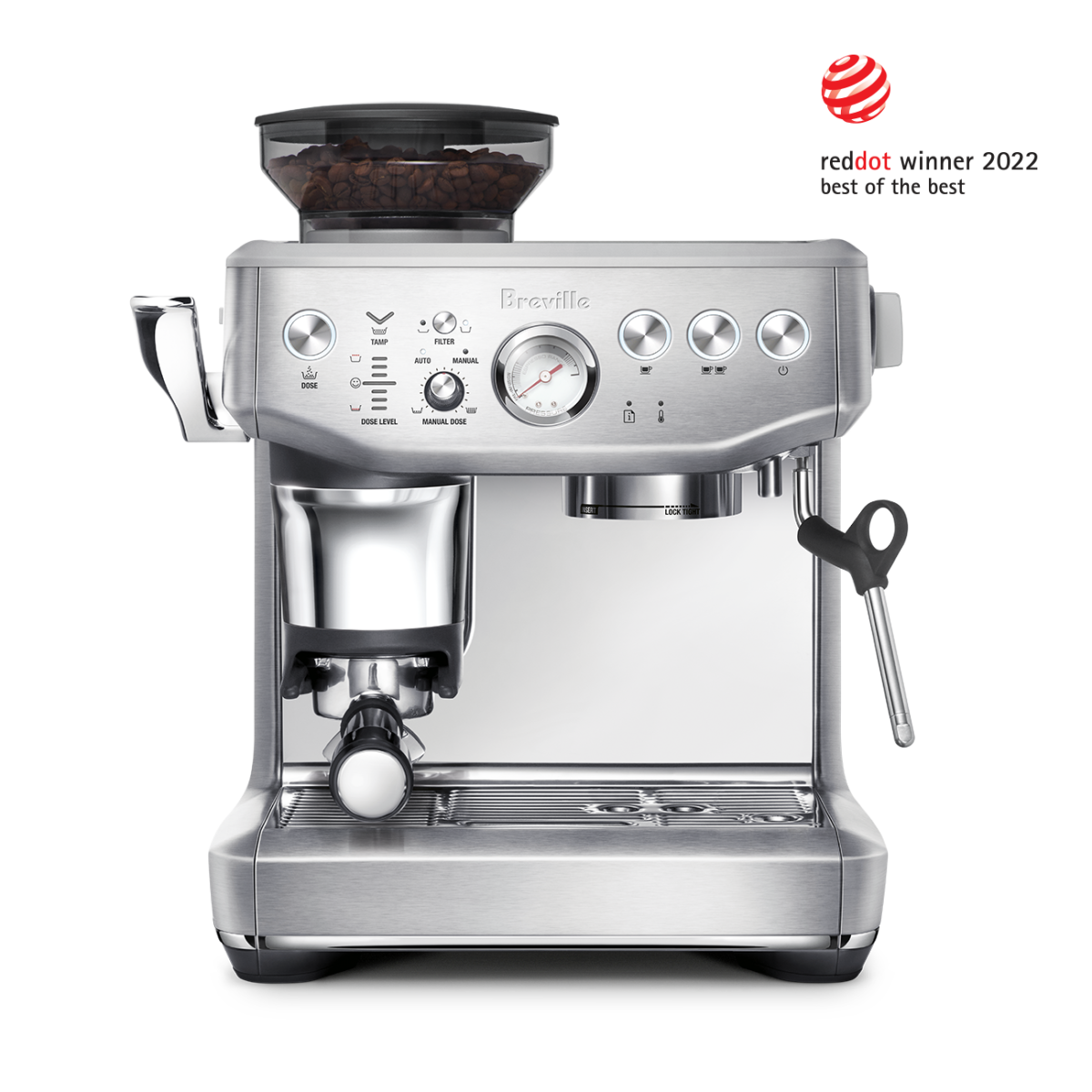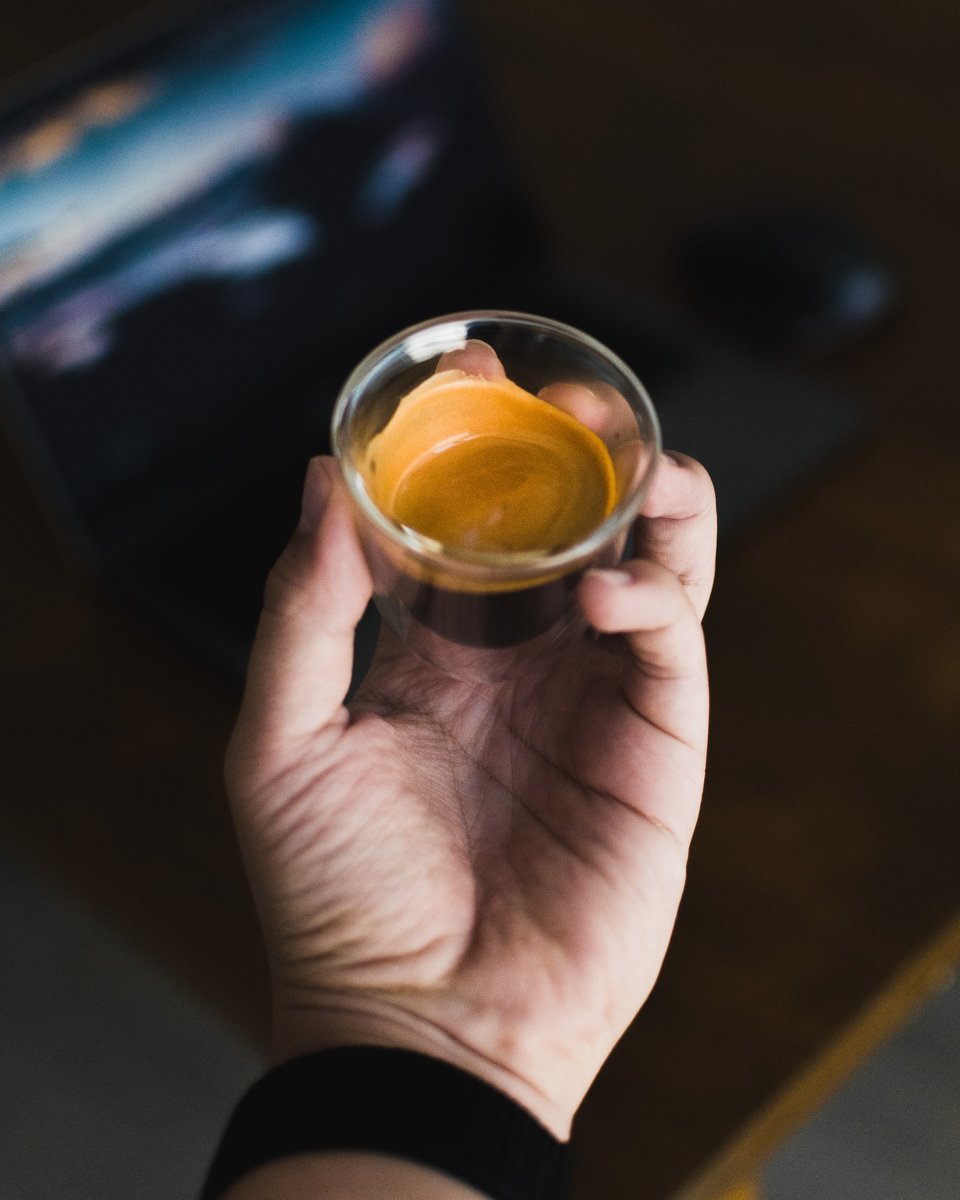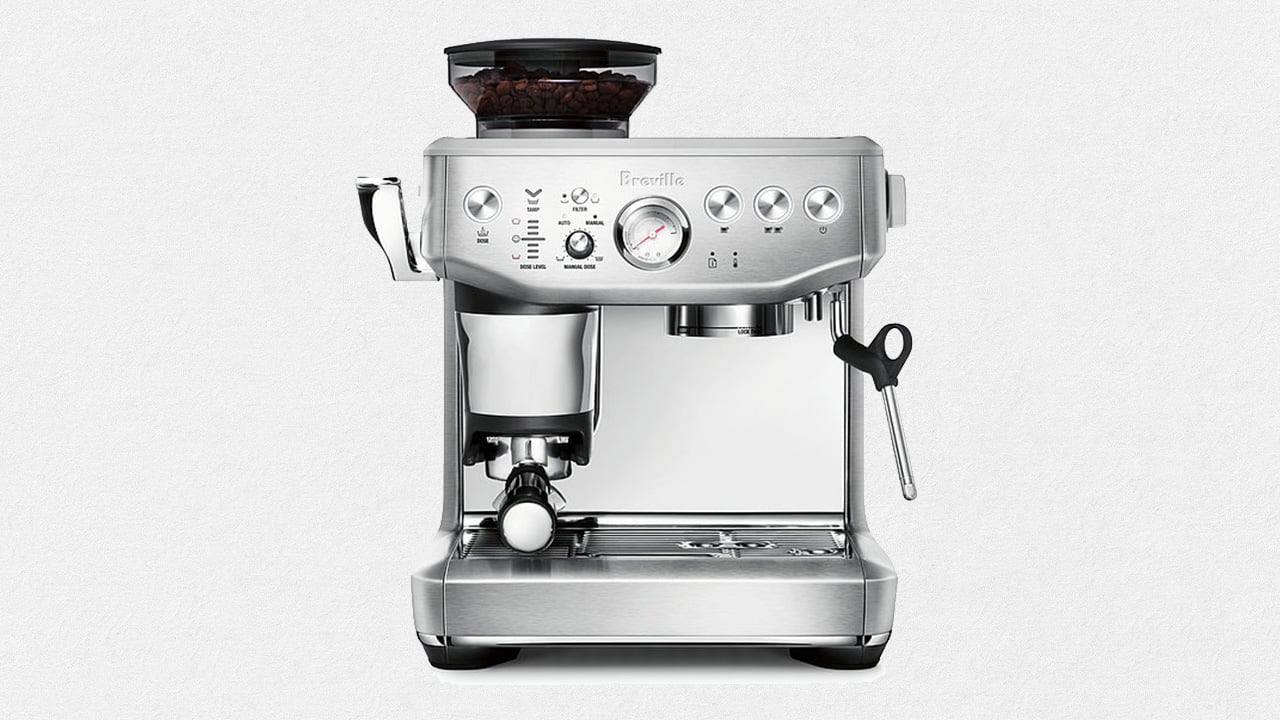When we introduced the Breville Oracle Touch espresso machine to the Boss Hunting office, my only real qualm was heating single amounts of milk, while measuring the temperature effectively with the steam wand. It’s also expensive at ~$4,000, but that’s the price dual boiler functionality commands.
Across the Breville Espresso coffee machines range, however, there’s an additional cost – the touch screen – and while it’s a nice ‘touch’ it’s most definitely a ‘nice’ to have. As in…you don’t need it.
With accurate grind, dose and shot timing, you can achieve what you need to with the brewing functionality packed into the more affordable machines. Enter the Breville Barista Express Impress.
The Breville Barista Express Impress arrived late in 2022 and has since been overshadowed by its tech-filled brother, the Breville Barista Touch Impress. The difference? A touch screen with alternative milk functionality, and your preference to partake in a manual, or more automated brewing process. Oh, and the price. Commanding a $1000+ premium over the original Barista Express Impress.
It’s been roughly 6 months since I included it in my favourite things so I thought I could add some value to those researching which Breville Espresso espresso machine to buy with my own Breville Barista Express Impress review, highlighting just how good the sub $1000 machine is, and how it compares to its more expensive coffee machines.
And to reiterate just how much value I put on this thing, I’ve also included the Breville Barista Express Impress as one of Boss Hunting’s top picks in our highly curated guide on the best gifts for men.
Breville Barista Express Impress
Exceptional
92/100
SCOREPROS
- Easy to set up, quiet and efficient
- Incredible engineering
- Excellent design and build quality
- Consistent, fantastic coffee
- Exceptional value
CONS
- Drip tray needs to be emptied & cleaned frequently
- Manual needs to highlight cleaning and care process better
- Burr grinder could have more settings
Table of contents
Design – Score 23/25

If an innovative ‘Impress’ puck system operated by a slot machine-style lever that tamps your ground coffee – with the correct 10kg of pressure and 7-degree twist – sounds like a gimmick to you, you’re not alone. When the product press release first landed in my inbox, I was sceptical to say the least. Upon unboxing it and putting it to the test, however, I was amazed at the engineering and boggled by the thought of how many iterations it had gone through to get right.
Basically, the grind size is set, the basket size is chosen, and then you press a button to grind. The machine delivers a consistent dose of coffee into the basket (90% of the time) and then you use the lever to compress the grounds. The action illuminates a display on the machine to confirm the right dose of coffee has been tamped. The lever is solid and self-assured and tamps effectively with a single press. There’s a reason it won a ‘Best Of The Best’ in last year’s Reddot awards. It’s excellent.

Outside of compelling, real innovation, the espresso machine radiates quality through its stainless steel body, thick plastics and rubbers, thoughtful storage, efficiently placed buttons and steaming wand and a well-weighted portafilter. The analog pressure gauge brings a serious ‘barista feel’ to the whole operation which contrasts with the smiley face located next to the correct tamp light – bit of a gimmick for me.
Other than that, the removable plastic cover over the puck system is a tad underwhelming.
Features – Score 22/25

The Barista Express Impress is packed with features and accessories that see it excel in the home environment. The coffee machine heats up quickly in the morning and is quiet in operation. The 250g bean hopper supplies a burr grinder with a sufficient 25 grind settings, operated by a simple manual wind wheel.
Potentially, the built in grinder could have had an additional grind size setting somewhere between setting 5 and 9 for a handful of beans I ran through it, but that shortfall may have also been my lack of trialling different grinds to get it spot on. Once it was honed with my espresso bean of choice – Sample Coffee’s Pacemaker Espresso Blend – it delivered perfect ground coffee.
The machine lets you set the automated dosing system to the basket size of your choosing – single or double. From there, you can adjust another dial to either decrease or increase the dose of freshly ground beans into that basket. You can also adjust the brew temperature and volumetric shot control.
I find the settings similar to that of an SLR camera – shifting to manual mode allows you to change individual settings but various combinations of each can all lead to a very similar result. After playing with them for weeks, I worked out the formula. Get the grind right and then let the machine do its thing on auto.
From a technical standpoint, the machine features a single 15-bar pump and a 2-litre water tank with an integrated & replaceable filter. A Thermocoil heating system with PID temperature control delivers water at exactly 93ºC for perfectly balanced flavours while the steam wand provides high-pressure, 130-degree steam for rapid, silky, milk.
The unit comes with a 480ml jug, water filter, and the Razr trimming tool (actually quite handy for correcting an overdosed basket), along with cleaning tablets to get you through the first 6 months or so. Breville provides a 2-year repair, replacement or refund guarantee.
Brewing – Score 23/25

As I outlined above, the Breville Barista Express Impress espresso machine has a single heat exchanger boiler, meaning that it cannot extract a shot while steaming milk like the Oracle Touch we have in the office (which I’ve also previously reviewed). Does this matter? I don’t think so. I rarely use the dual boiler functionality on the Oracle Touch anyway.
At times, I prepare multiple milk-based (oat and dairy) espresso drinks for groups of 5 and 6 and the machine is perfectly capable of regulating its temperature in a timely manner between steaming milk and moving back to extracting coffee, which it does by releasing steam and water into the drip tray. The steam wand is powerful enough to get the milk frothing result you need before the espresso shot loses its creamy texture, which is absolutely fine for me.
Unlike the Oracle Touch coffee machine, the wand is manual, meaning you can move it freely and will need to monitor the temp of your milk by hand which I far prefer. I like to control where the steam enters the milk and the angle at which it does so.
Neither of which you can do on the Oracle Touch.
I will say that I find the supplied 480ml jug just a tad small for two oat milk coffees and too big for one. I run a smaller jug for single coffees which I would highly recommend to buyers.

The low-pressure pre-infusion brings the pressure gauge to life, followed by a 9-bar extraction that produces consistently excellent coffee (when the grind is right, of course). I run the double basket at all times and find the double shot button to deliver a great shot, always.
When making coffee for my wife, who doesn’t enjoy it as strong, I still use the double basket but press the single shot button which appears to deliver less coffee. When I want a shorter coffee I would still press the double shot button, I just stop it at 12-15 seconds for my best attempt at a double ristretto.
When I want a long black I extract a full double shot, then add the water which comes from a spout near the steam wand and is controlled by the same knob as the steam (by rotating it in the opposite direction). Again in comparison to the Oracle Touch, the water spout is in a much better location and shoots straight down rather than at an awkward angle which often requires you to move the anyway.
This brings me to my next point, there’s also less mess. I’m not sure how, but there is.
In summary, I now produce quality coffee at home that replaces barista-made coffee from our local cafe, I make it the way I like it, at the temp I like it, every day, and when you drink a strong oat cappuccino on top of your wife’s oat cappuccino that’s a daily saving of ~$11. Over a year, that’s more than $4,000 staying in your pocket.
Verdict & Value – Score 24/25

I think the team at Breville have taken a lot of learnings from their more expensive coffee machines and applied them to the design of the Breville Barista Express Impress. That may be to their detriment but most definitely a win for you.
After using the Oracle Touch, which is closer to a commercial espresso machine, I can confidently say that I wouldn’t recommend it over this machine. The Barista Express Impress is so capable of producing delicious tasting coffee and it’s a quarter of the price of the Oracle Touch.
I’ll do the maths on the savings above. The Breville Barista Express Impress is currently listed on Breville for $999. If you purchased one tomorrow and saved $11 a day, it would only take you 91 days to break even – let’s call it ~100-110 days with 1kg coffee bags and milk. How can you argue with that value?
I’ll finish by saying the Breville Barista Express Impress is the perfect choice for coffee lovers that want to enjoy the coffee-making process, and the resulting beverage, but want to achieve it in the most efficient way possible. You’d be hard-pressed to find a better buy coffee machine for the price.
Breville Barista Express Impress – Frequently Asked Questions
What is the price of the Barista Express Impress?
The recommended retail price for the machine is $1,199 however retailers (including Breville direct) often have it listed for under $1000.
What is the difference between the Barista Express Impress & Barista Touch Impress
The most notable difference between these espresso machines is the touch screen, however, there are details that prove Breville has refined the Express Impress. The unit features a Barazta burr grinder with 30 settings, a Thermojet heating system, an automatic steaming wand and alternative milk settings.
What is the difference between the Breville Oracle Touch and Barista Express Impress?
The main difference is the boiler setup. The Oracle Touch has dual boilers while the Barista Express Impress is a single heat exchanger boiler, meaning it cannot extract coffee and steam at the same time. Other differences include automated steaming on the Oracle Touch, as well as a touchscreen, industry-standard 58m portafilter, heated group head and more.
















